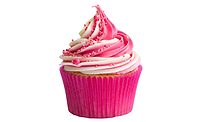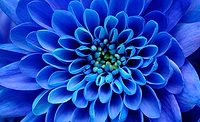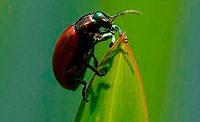Yellow is considered a happy, optimistic color. Those who choose it as their favorite tend to be sunny, upbeat people who are maybe just a bit unusual – but in a good way.
Unfortunately, their numbers are few. Surveys indicate that only 6 percent of people in Europe and North America pick yellow as their favorite color. More people prefer blue (45 percent), green (15 percent) and even black (10 percent).
No matter. Little can dampen yellow’s cheer. It alleviates depression, improves memory and stimulates the appetite. It’s associated with happy things, such as rubber duckies – which, these days are made of polyvinyl chloride or a polymer-based synthetic rubber – smiley faces and SpongeBob.
In Greek mythology and ancient Egypt, yellow symbolized the sun and the sun was worshipped as a god. Hard to get much more positive than that.
Look At Me! I’m Yellow!
The brightest color in the spectrum (at 570 to 590 nanometers), yellow is hard to ignore. The most easily visible color from a distance, it’s perfect for school buses, caution signals, crime-scene tape and highway construction equipment. School bus yellow (hex number FFD800) was specially formulated in 1939 for use on school buses in North America. Yellow is easily detected in peripheral vision, and black lettering on yellow is easy to see in the semi-darkness of early-morning bus runs. Caterpillar Inc., the world’s leading manufacturer of construction and mining equipment and other heavy machinery, has its own proprietary shade of yellow as well.
Easy visibility also was the reasoning behind the first yellow taxis and why John D. Hertz, who founded the Yellow Cab Co. in Chicago in 1915, chose the color for his fleet. He went on to found the Hertz car rental company, which still uses yellow in its logo.
In the natural world, yellow’s visibility also plays an important role. The most common color for flowers, yellow is highly visible to the insects that bring the pollen needed to produce the next generation of blooms. Most varieties of pollen are yellow, too – which, alas, is not good for our allergies.
Art and Design
The earliest known use of yellow was more than 17,000 years ago. An unknown artist used yellow ocher, a natural pigment consisting of silica and clay, in a representation of a horse on the wall of a cave in Lascaux, France.
The ancient Egyptians also used yellow ocher for the skin tones on their murals. Other early yellow pigments often contained substances such as lead, arsenic and cow urine.
Synthetic pigments began to show up more frequently up in the 18th and 19th centuries, among them Naples Yellow (which contained lead) and cadmium yellow. Yellow took up a lot of space on Jean-Honore Fragonard’s palette. The Rococo artist is known for the warm, sunny yellows he used for clothes in such paintings as A Young Girl Reading or the soft, nostalgic effects he achieved in his pastoral scenes. More than a generation later, J.M.W. Turner used yellow to create moods and emotions in his landscape paintings. Turner’s Yellow – named after the chemist who invented it, not the artist – was a lead-based paint fashionable in the 18th century. It was later supplanted by cadmium yellow. Today, fast-drying acrylic paints are made of pigment suspended in an acrylic polymer emulsion. Synthetic yellow ochre, often made with synthetic iron oxide, is frequently used in the paint and plastics industries.
Few artists loved and used yellow like Vincent Van Gogh. It was the color of sunshine, he wrote to his sister in 1888 from his new abode in the south of France. The house he rented in Arles was painted what he called “a buttery yellow.” He captured the house on canvas, as well as his bedroom (also yellow) and went on to paint sunflowers, a starry night and sweeping landscapes of golden wheat fields.
Should you paint your bedroom yellow? Maybe not, according to interior designers who maintain that yellow as a main color scheme could lead to feelings of frustration and anger.
Tie a Yellow Ribbon
No consideration of yellow is complete without a look at the popular and ubiquitous ribbon.
The legend of a ribbon, originally white, as a remembrance for an absent loved one may go back as far as the Puritans. Other histories tie the yellow ribbon to the Civil War.
In songs and folk tales, women wear yellow ribbons as signs of devotion to their husbands or sweethearts serving in the army. A popular military marching song, first copyrighted in 1917, tells of a woman who wears a “yeller ribbon” around her neck for her lover who is “fur, fur away.” By 1949, in both a song and a movie, she was wearing the ribbon in her hair.
Sometimes the missing person is a prodigal returning from prison, as in a Reader’s Digest article in the early 1960s (when a white ribbon was supposed to be displayed on an apple tree) or the1973 pop hit, “Tie A Yellow Ribbon Round the Ole Oak Tree,” by Tony Orlando and Dawn. In both cases, hundreds of ribbons covered the appointed tree and the convict returned to a loving family.
In January 1975, Gail Magruder used yellow ribbons on her porch to welcome home her husband Jeb, who went to jail as part of the Watergate scandal. The event was televised on the evening news. One of the viewers was Penne Laingen, whose husband Ambassador Bruce Laingen, was among the embassy staff taken hostage by Iranian revolutionaries in November 1979. She tied a ribbon around an oak tree in her yard, helping to turn the ribbon into a worldwide symbol of waiting for the return of an imprisoned hero.
The Library of Congress’ American Folklife Center has a detailed history here.
Yellow Brick Road to the Perfect Shade
If you’re curious about yellows, the experts at Plastic Color’s Solutions Center can help you spice up your product line with the latest in attention-grabbing hues. Whether you’re looking for amber, sunglow, banana or sunflower, Plastics Color can provide industry-leading formulations and color concentrates to meet your specifications. Contact Plastics Color today for more information at www.plasticscolor.com.






Report Abusive Comment